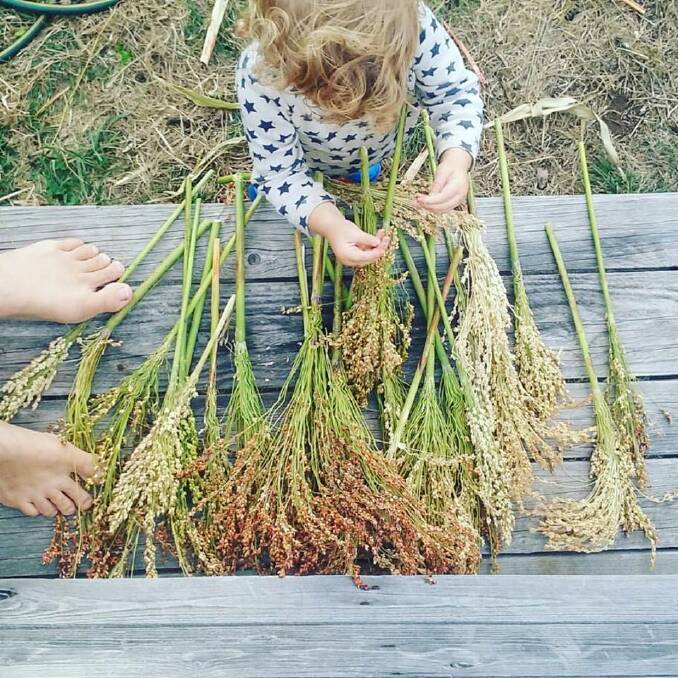Unnecessary waste products sneak into our lives in the most invisible little places – take the kitchen sink for example.
Most people will have an array of steel and/or plastic sponges and scrubbers hanging around to wash their dishes. These, of course, all eventually end up in the bin – AKA landfill.
These days there are a vast range of kitchen scrubbers in the eco-products department that you can buy which break down in the compost pile which is fantastic.
But did you know there’s pretty much always something you can grow yourself that will do the same job?
Growing up in sub-tropical Brisbane, we’d grow the luffa vine and use this in the bathroom and kitchen. In more tropical climates, people use coconut husk.
Alas, it’s a tad cold in cool temperate Tasmania for either of those plants – hence our enthusiasm when my husband Anton’s mum gifted us with a little broom millet (sorghum bicolor) scrubbing bush all the way from (very cold) Sweden.
We promptly went about sourcing some seed so we could grow our own, and one year later we now have our own little batch of broom millet scrubbing brushes.
Here’s the full journey in pictures …
How to make your own millet brush
- Once you’ve grown, harvested and dried the seed heads, thrash the seeds off the plant and save it for eating and/or for growing for next season.
- Then, cut it into desired lengths and form a nice little bunch in your hand.
- Next you simply tie some string around it to keep it all together. We recommend using a waxed string as this repels water, preventing the string from becoming smelly with excess water hanging on.
- First, use some rubber bands (or equivalent) to keep your millet in place.
- Next, start wrapping your string neatly around your bunch, leaving a loop exposed at one end.
- Once you’re happy with the amount of wraps (i.e. run out of string), put the end you’re working with through the exposed loop.
- Gently and slowly, pull the other loose end of string until you’re pulling the looped end under the wrapped area. By doing this, you’re making a knot which ties off the whole thing.
- You’ll be left with two bits of string sticking out from either end of the wrapped area – just chop them off, remove the rubber bands and you’re done!
The patch of broom millet we grew was around three metres by two metres with approximately 25 plants.
Of those plants, some seed heads were lost to birds and some didn’t form overly well.
We ended up with seven scrubbing brushes from around 15 plants.
But interestingly, one scrubbing brush will last for over one year – we’re still using ours that was gifted to us well over a year ago.
I’ve had to replace the string once, but otherwise the fibre is incredibly strong and still going.
Technically this means we have over seven years of scrubbing brushes ready to go.
While it took a while, we’re now very sorted in the scrubbing brush department.
Say goodbye to weird plastic products and hello compostable, uber local and satisfying resources!
- Hannah Moloney and Anton Vikstrom are the founders of Good Life Permaculture, a landscape design and education enterprise regenerating land and lifestyles.


